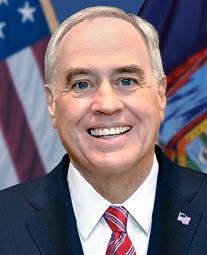Despite significant uncertainty caused by inflation and other factors, State Fiscal Year (SFY) 2022-23 reflected continuing recovery from COVID-19 and economic growth. In this environment, State policymakers increased support for schools, health care and other programs. At the same time, new risks to financial stability are emerging. These include unexpected costs to support an influx of migrants seeking asylum and significant reductions to projected State tax revenues driven by declining personal income tax receipts.
Federal aid provided $89.6 billion, or 38 percent, of the State’s All Funds receipts in SFY 2022-23. This aid supports health coverage for nearly 9.4 million New Yorkers and plays essential roles in programs including K-12 education, mass transit and social assistance. Critically, the financial plan used more than $14.7 billion of COVID-19 stimulus funding in SFY 2022-23, and the remainder of this funding is scheduled to be substantially depleted by the end of SFY 2024-25.
State tax receipts totaled $111.7 billion in SFY 2022-23, a decrease of $9.5 billion from the prior year caused by a $12.0 billion reduction in Personal Income Tax (PIT) receipts. PIT declines were partially offset by growth in consumption and use taxes, business taxes, and other taxes.
This report provides information and analysis on the full spectrum of New York State government finances and services, starting with key fiscal indicators for revenue, spending, capital investments and debt. It highlights major issues in programmatic areas ranging from public health to public safety, energy and the environment, K-12 and higher education, transportation and more.
We remain in a period of uncertainty and ongoing risk due to global, national and State-level factors including the ongoing conflict in Ukraine, elevated interest rates to combat inflation, and sluggish employment recovery in New York relative to the rest of the nation. My hope is that this Financial Condition Report can serve as a resource for New Yorkers as the State emerges from the pandemic and policymakers contemplate the best path forward.
Thomas P. DiNapoli
State Comptroller

